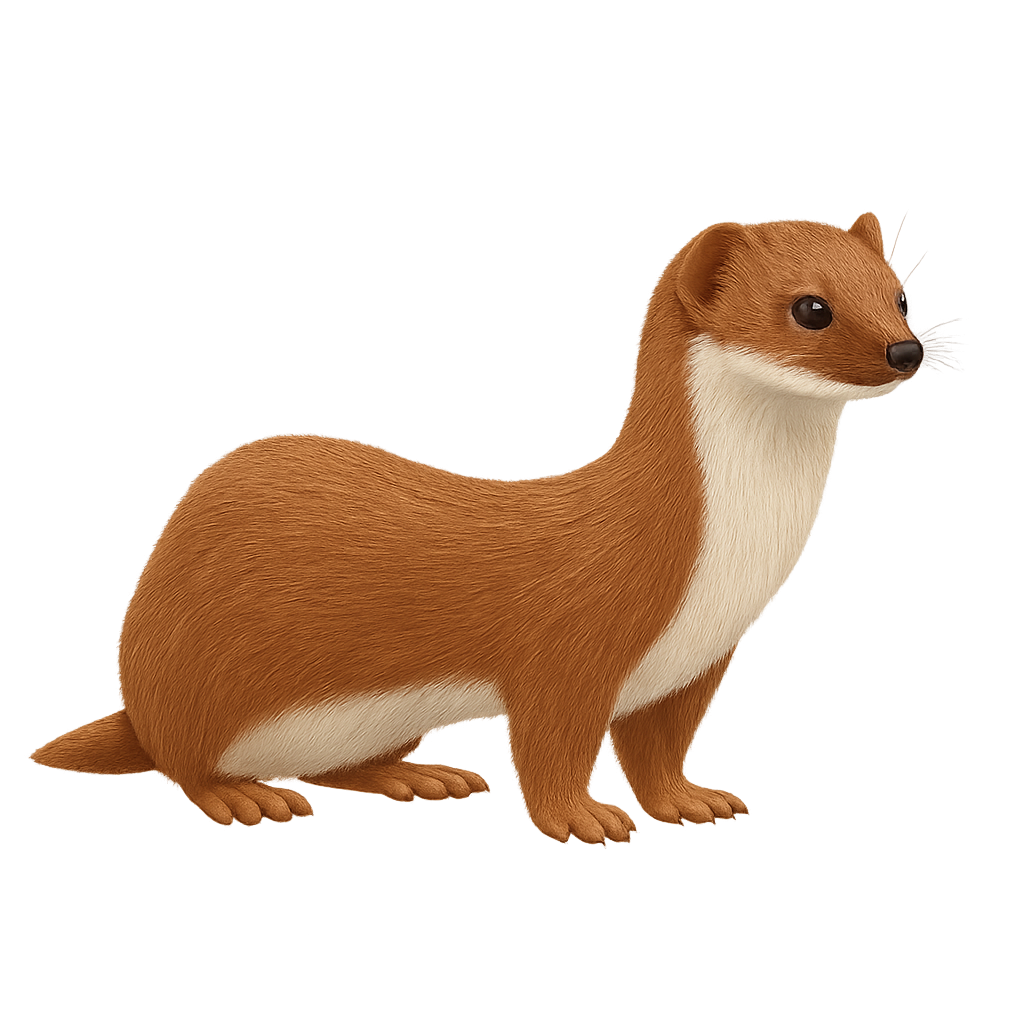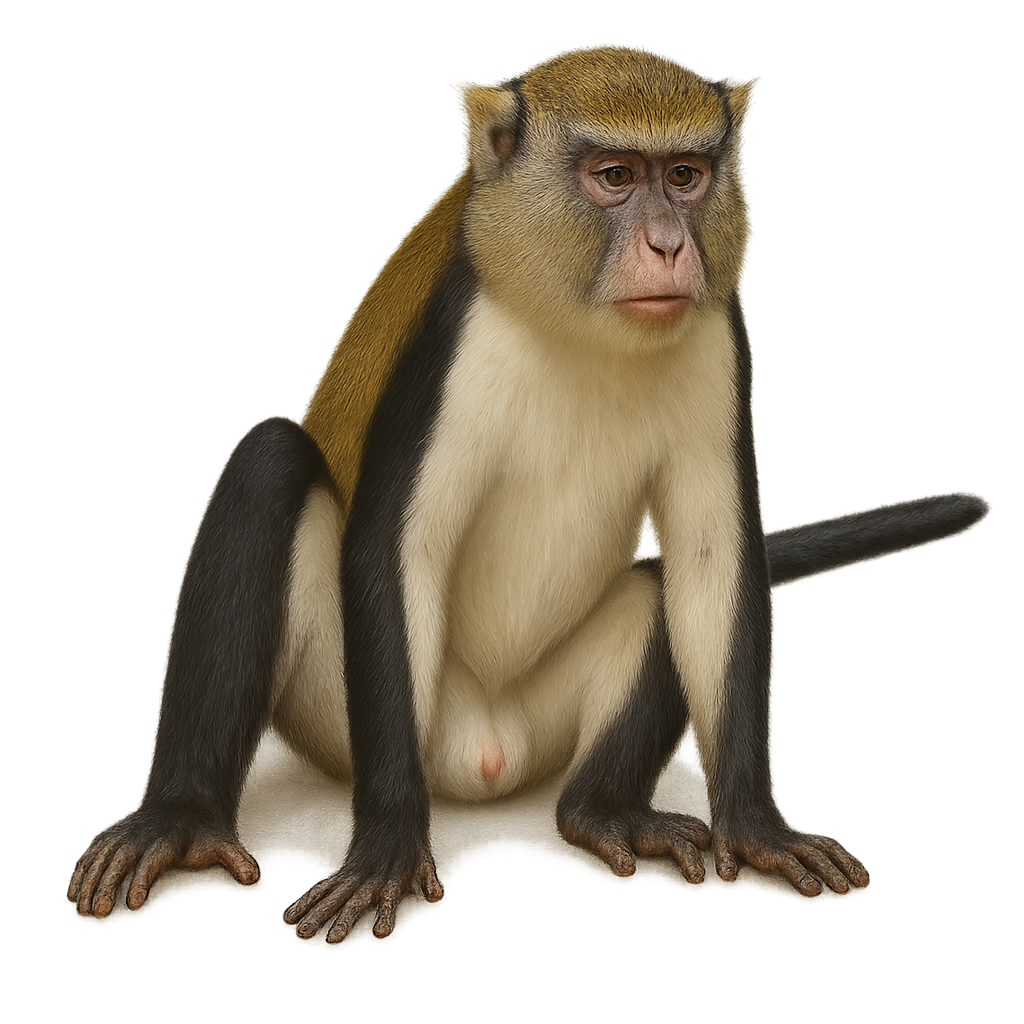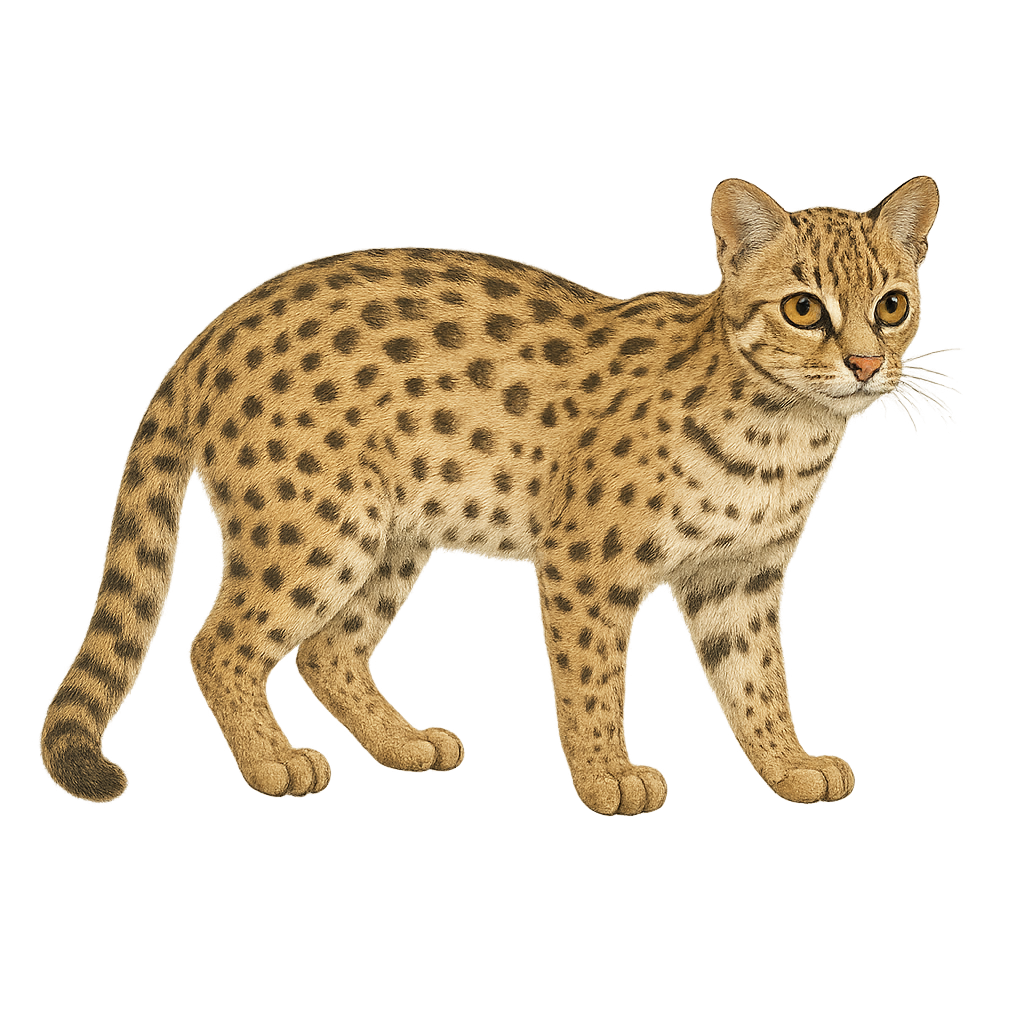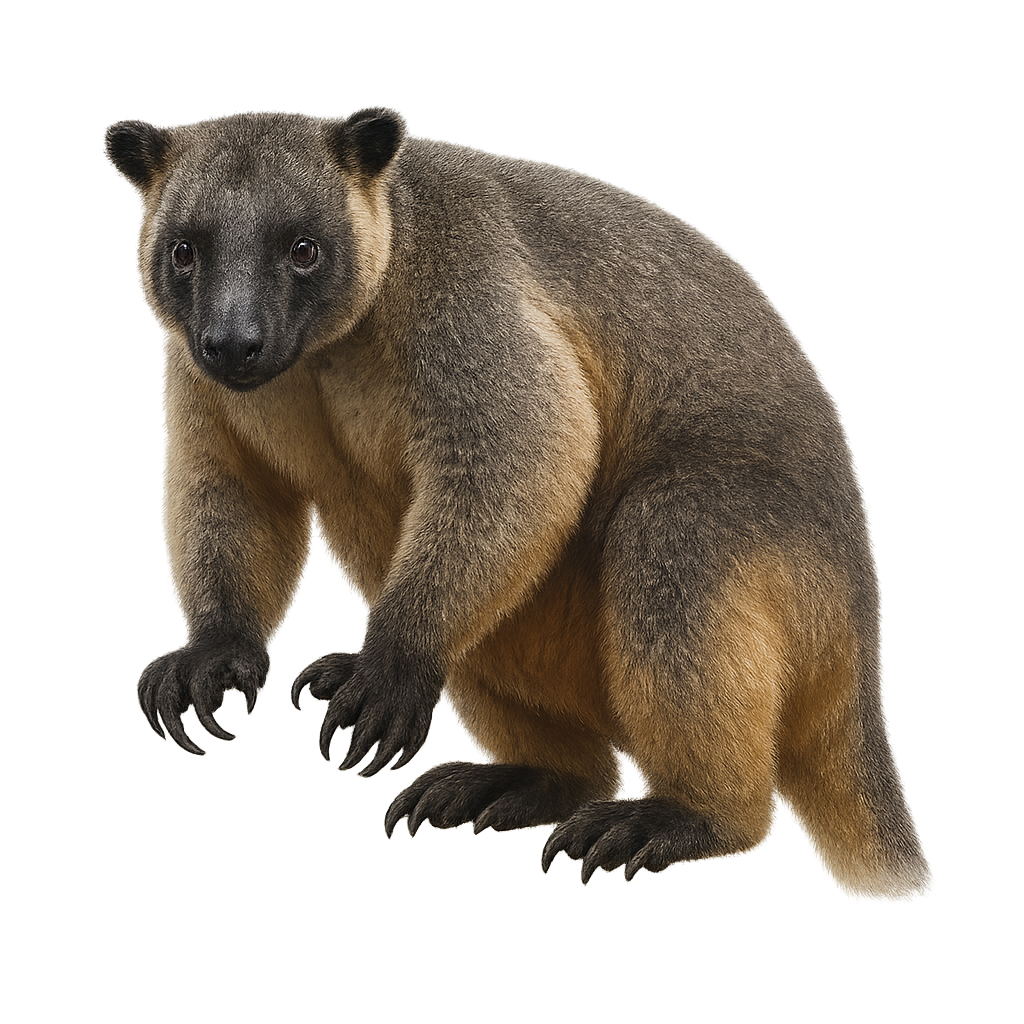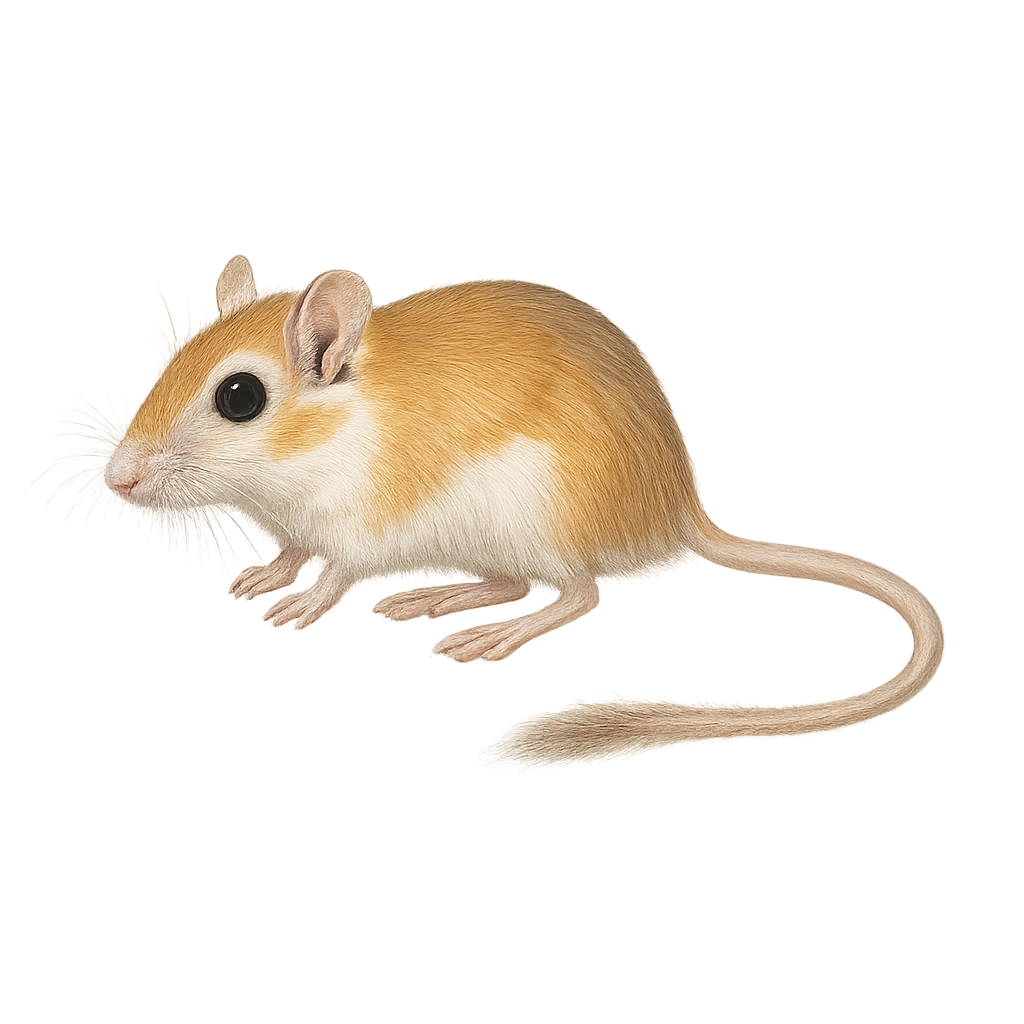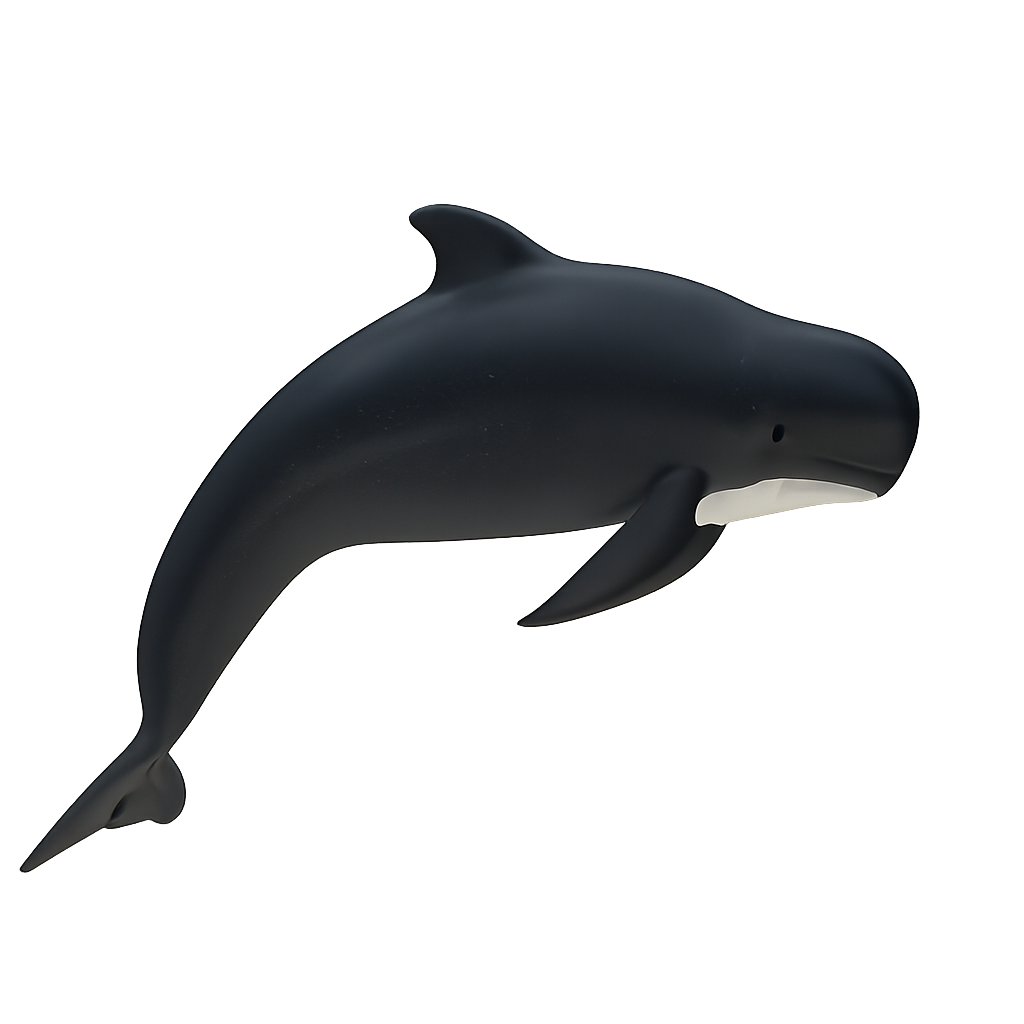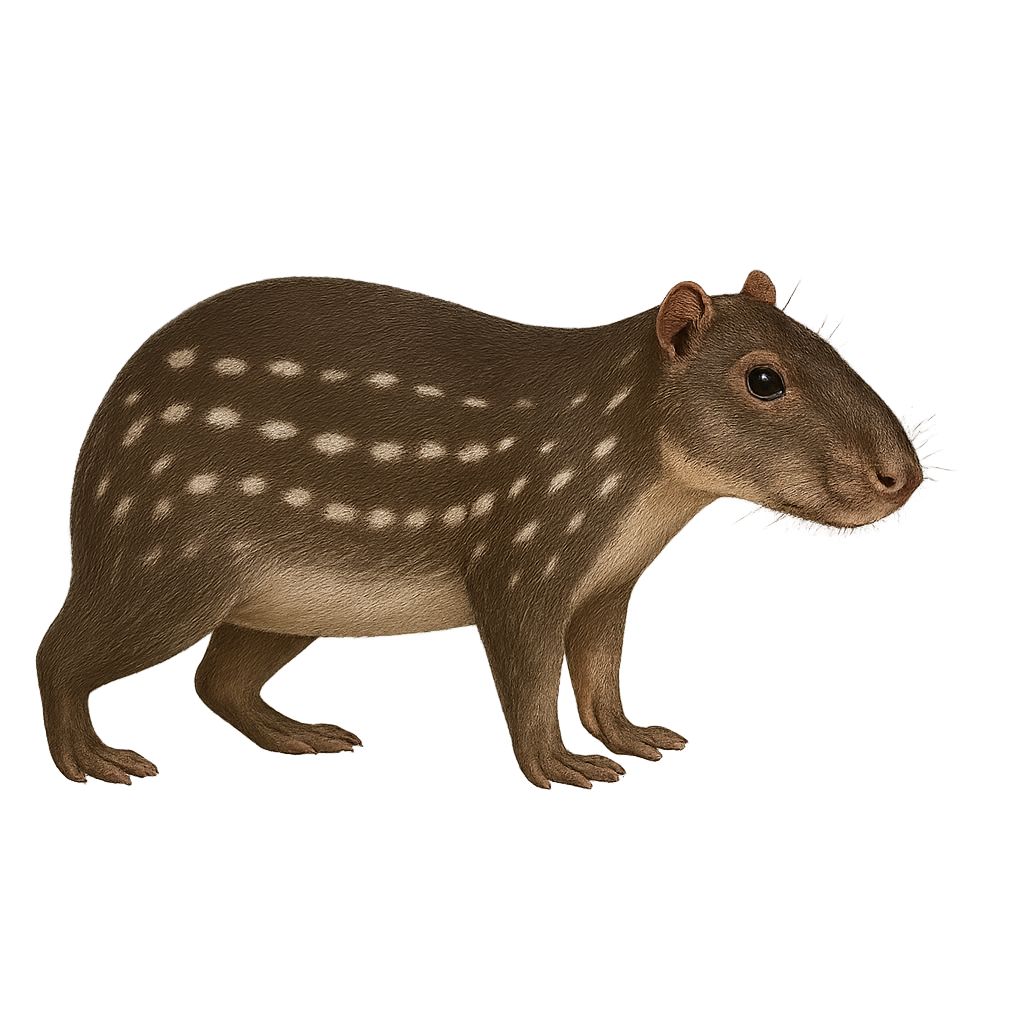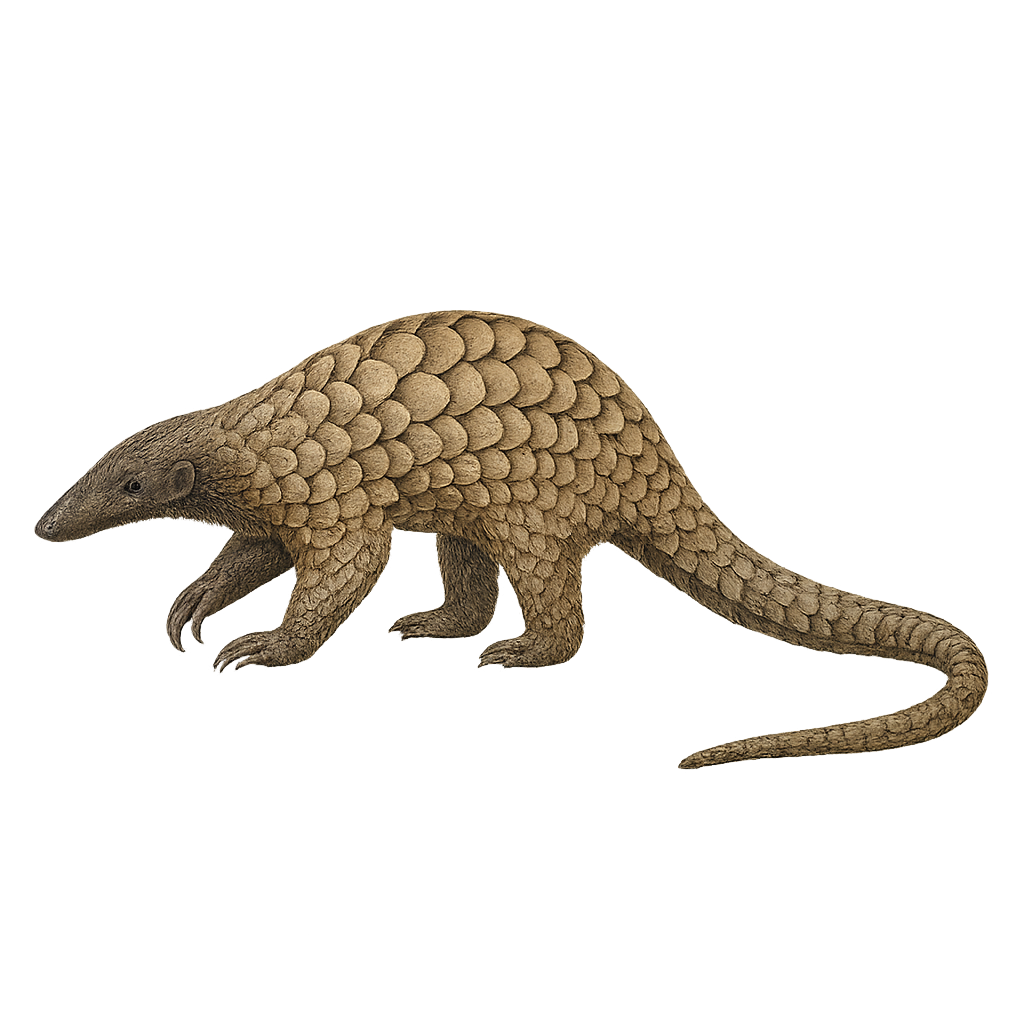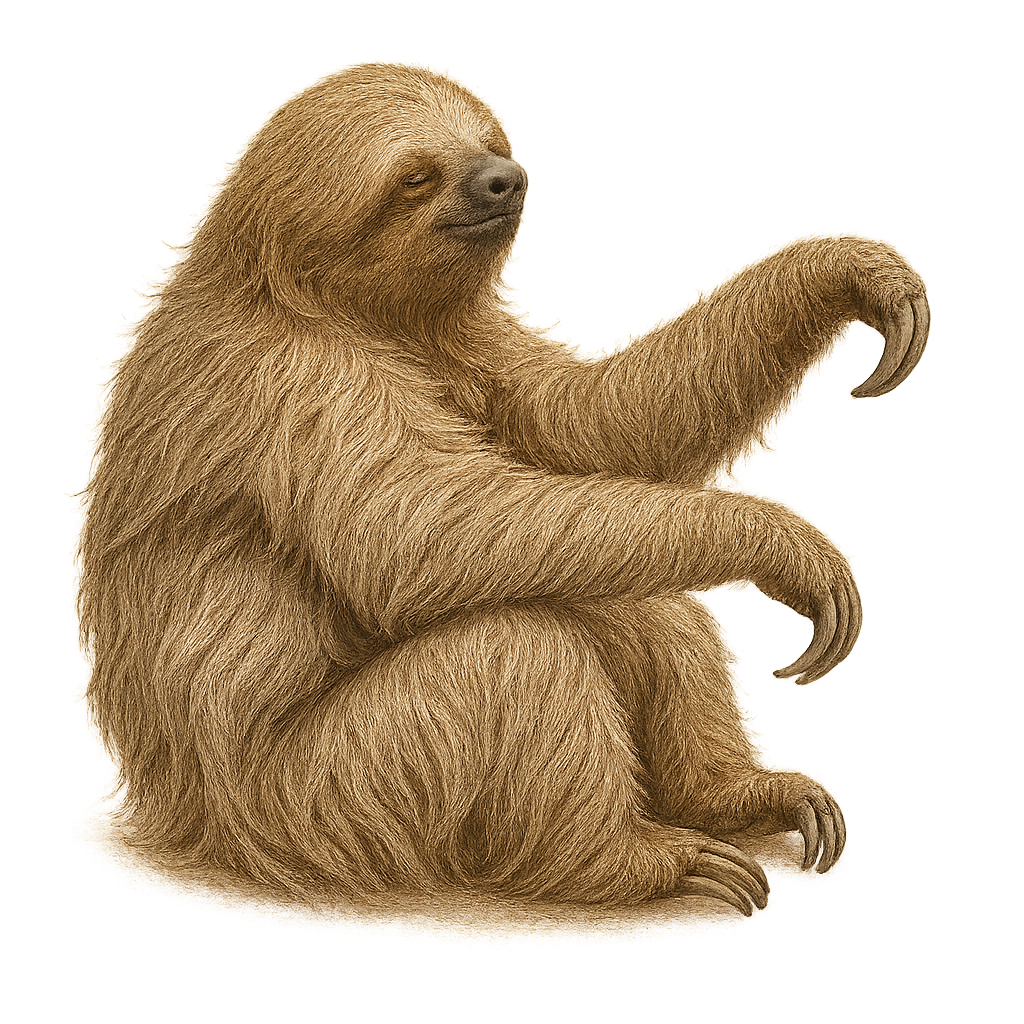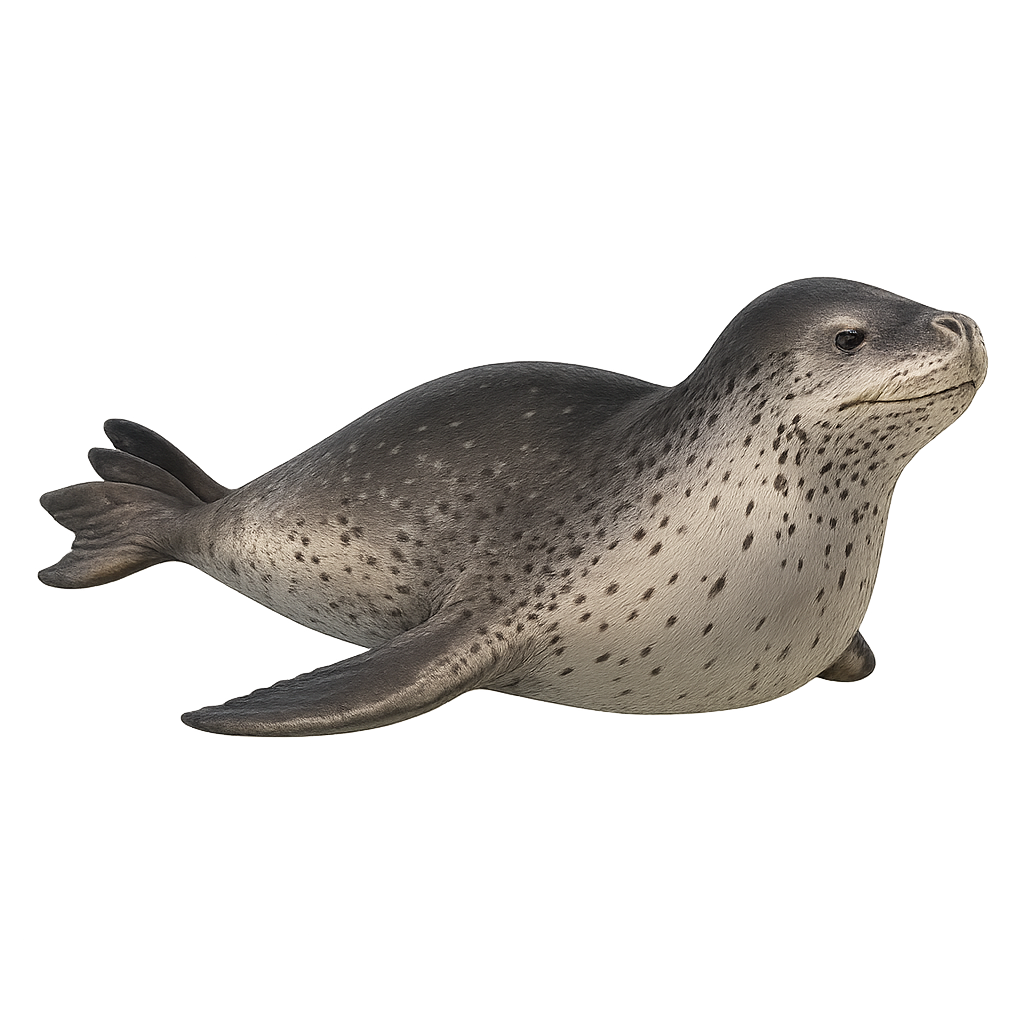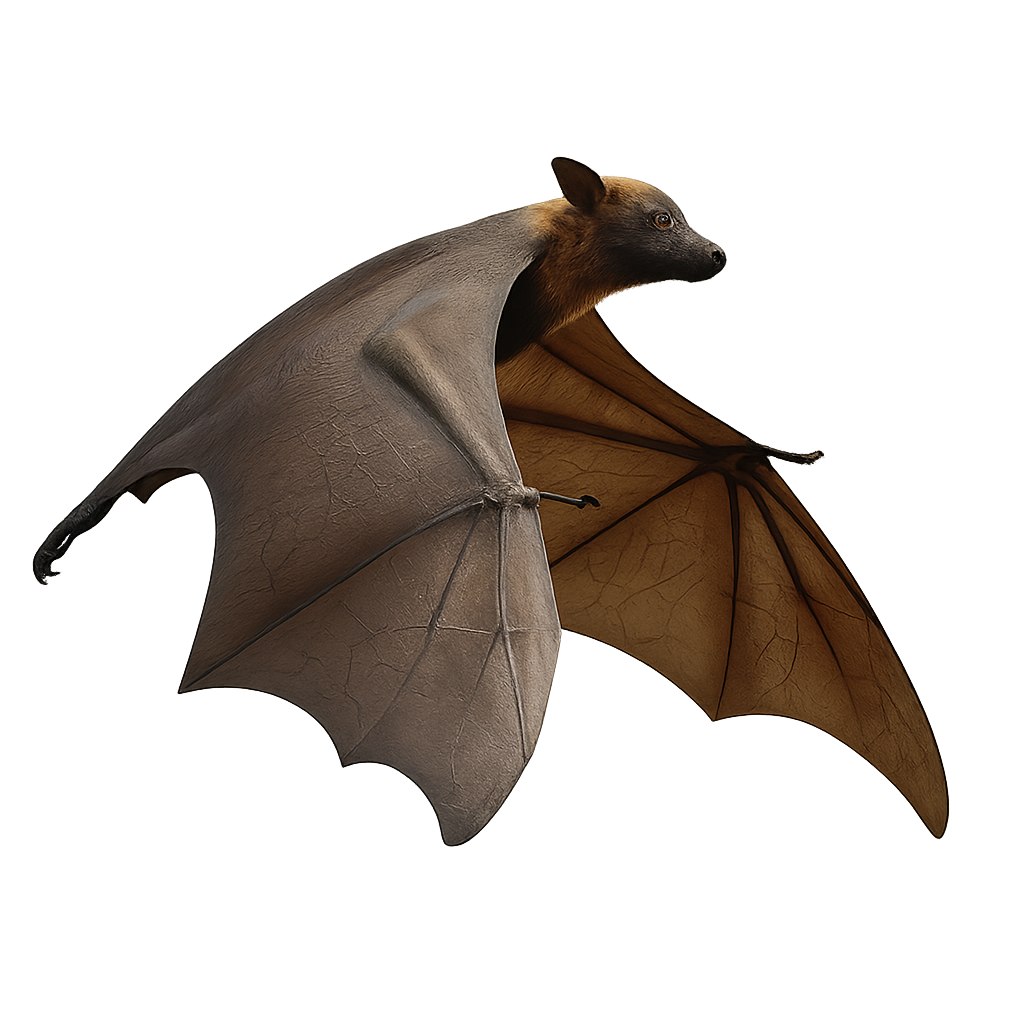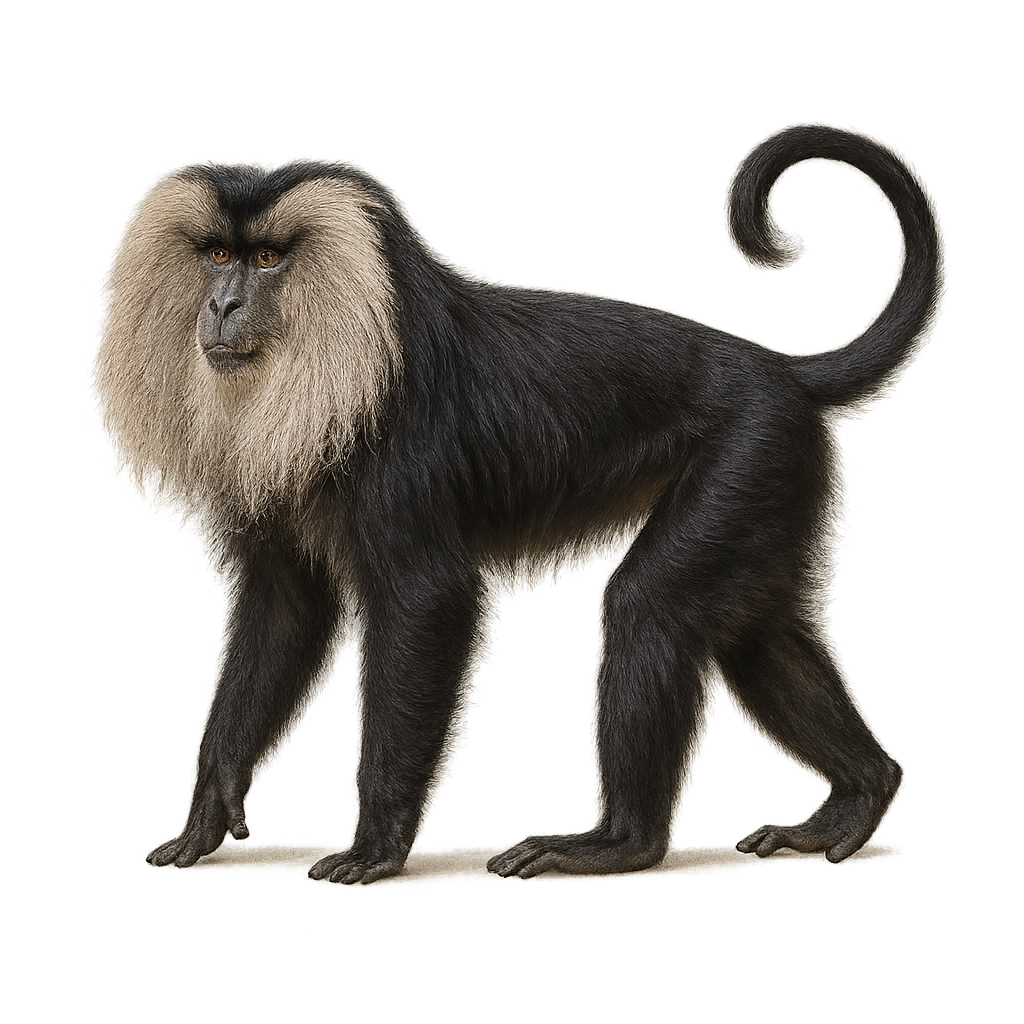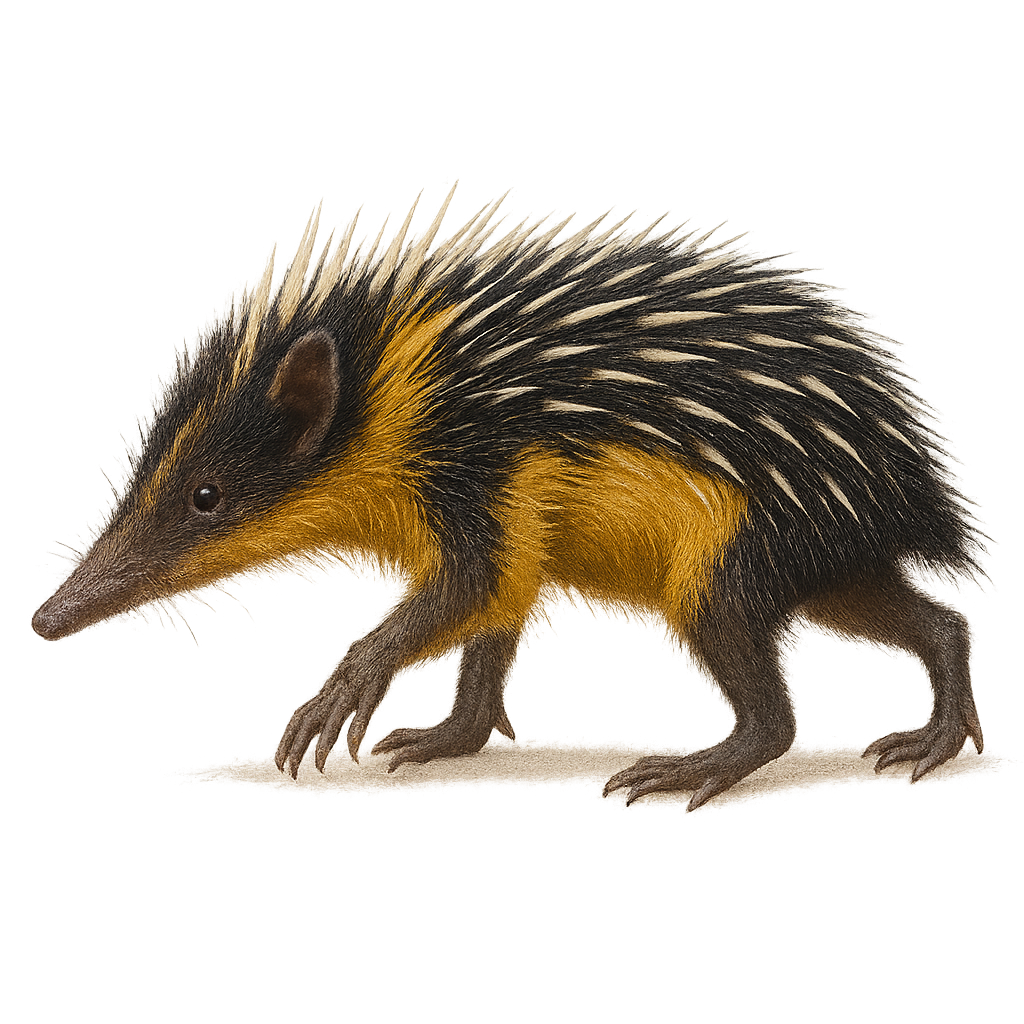The European Weasel is the smallest carnivore in Europe, easily recognizable by its tiny size and brown coat with a white throat and belly. It primarily inhabits a variety of environments such as forests, meadows, and agricultural areas, where it hunts small mammals, birds, insects, and eggs. Agile and fast, the European Weasel is a stealthy hunter, capable of slipping into tight spaces to capture its prey.
Solitary and territorial, the European Weasel is active both day and night, and it uses its own burrows or those of other animals to hide and rest. Though small, it is a formidable predator, often seen as beneficial for regulating small rodent populations. However, it can be threatened by habitat destruction and changes in agricultural practices.
The Lowe's Monkey is an arboreal primate found mainly in the tropical forests of West Africa. It is characterized by its grey-green fur and black face surrounded by white hair. This monkey is social and lives in groups of up to 30 individuals. It primarily feeds on fruits, leaves, and insects. Although its habitat is threatened by deforestation, it partially adapts to degraded areas. Its communication is rich, using varied vocalizations to alert its peers of dangers. The Lowe's Monkey plays a crucial role in seed dispersal, thus contributing to forest regeneration.
The Prionailurus bengalensis, or leopard cat, is a small wild feline widely distributed in Asia. It has a spotted coat reminiscent of a leopard, hence its name. This feline is particularly agile and adapts to various environments, from tropical forests to agricultural areas. It is primarily nocturnal and solitary, although it may sometimes be seen in pairs during the breeding season. Its size ranges from 38 to 66 cm, with a tail of 17 to 31 cm. The leopard cat is an opportunistic predator, feeding on small mammals, birds, and insects. Although still relatively common, deforestation and hunting pose increasing threats to its survival.
The Long-tailed chinchilla is a small rodent native to the mountains of South America, particularly the Andes. It is known for its extremely soft and dense fur, which helps protect it from the cold in its natural high-altitude habitat. Although its fur is an asset for survival, it is also the primary reason for the animal's hunting, although it is now protected. The Long-tailed chinchilla is a nocturnal and climbing animal, feeding primarily on plants, seeds, and fruits. It is active at night and spends the day hidden in crevices or burrows.
The Lumholtz's Tree Kangaroo is an arboreal marsupial native to the rainforests of northeastern Australia. It is known for its ability to climb and leap between trees, aided by its strong limbs and long tail, which acts as a counterbalance. Its fur is typically dark brown on the back and lighter on the belly, providing camouflage in its habitat. It primarily feeds on leaves, fruits, and flowers. Although mostly nocturnal, it can occasionally be seen during the day. Its population is stable but vulnerable to deforestation and climate change.
The Lesser Egyptian Jerboa, or Gerbillus gerbillus, is a small desert rodent primarily found in the arid regions of North Africa. It is well adapted to its dry environment due to its ability to conserve water and its nocturnal habits, which help it avoid the daytime heat. Its fur is typically sandy, providing excellent camouflage in its natural habitat. It primarily feeds on seeds, insects, and desert vegetation. The Lesser Egyptian Jerboa is known for its long hind legs, which allow it to make large jumps, facilitating quick movements to escape predators. Although often solitary, it can sometimes be seen in small groups.
The long-finned pilot whale is a large oceanic dolphin in the family Delphinidae, measuring 5–6 m in length and weighing up to 1 200 kg. It has a robust black body, bulbous head, and long pectoral fins. It inhabits temperate to subantarctic waters, feeding mainly on squid and fish, and forms matrilineal social pods.
The Semnopithèque is a type of monkey primarily found in the forests of South and Southeast Asia. There are several species of langurs, all characterized by dense and typically colorful fur, ranging from black to gray, sometimes with golden or white tints depending on the species. These primates typically measure between 40 and 70 cm in length, with a long, prehensile tail that can exceed the length of their body. They weigh between 10 and 20 kg, with males generally being larger than females. Semnopithèques are herbivores, primarily feeding on leaves, fruits, seeds, and flowers, and they often live in organized social groups. They are known for their ability to move quickly through trees thanks to their long and agile limbs. While some langurs are threatened by deforestation and habitat loss, many species are still relatively widespread within their range. Semnopithèques play a crucial role in the ecosystem by helping to disperse seeds and maintaining the balance of forest vegetation.
The Leopard is a powerful and agile big cat, easily recognizable by its spotted coat, formed by black rosettes on a golden or yellow background. It typically measures between 1.2 and 1.9 meters in length, with a tail of 60 to 100 cm, and weighs between 30 and 90 kg, with males generally being larger than females. The Leopard is a solitary, nocturnal hunter, known for its ability to climb trees, often to hide its prey and avoid other carnivores. It is an opportunist, feeding on various types of prey, ranging from small mammals to medium-sized ungulates, and sometimes even reptiles and birds. This big cat is found across much of sub-Saharan Africa and in certain regions of Asia, including India, China, and parts of the Middle East. While the Leopard is a relatively widespread species, it is threatened by habitat loss, illegal hunting, and the depletion of its natural prey. It remains one of the most formidable and adaptable predators in the savanna, forests, and mountains.
The Lion is one of the largest land predators, often called the "king of the animals." It measures between 1.2 and 2.5 meters in length, with a tail of about 80 to 100 cm, and weighs between 120 and 250 kg, with males generally being larger and more massive than females. Male lions are easily recognizable by their majestic mane, which varies in color from light blonde to dark brown. Their coat is generally golden to light brown, with lighter patches on the belly and under the legs. Lions primarily live in Africa, with a small population in Asia (particularly in Gir National Park, India). They prefer open savannas, grasslands, and light forests. The lion is a social predator that typically hunts in groups, with females doing most of the hunting. Their diet consists mainly of large herbivores such as zebras, gazelles, and buffaloes. While the lion is an iconic species, it is threatened by habitat loss, human conflicts, and the depletion of its natural prey.
The lowland paca, or Cuniculus paca, is a medium-sized rodent native to the tropical forests of Central and South America. It is easily identifiable by its brown fur with distinct white spots on its sides. Pacas are nocturnal animals that spend the day in burrows dug near water bodies. They are herbivores, primarily feeding on fruits, seeds, and leaves. Their behavior is generally suspicious, making them difficult to observe in the wild. Pacas play a crucial role in seed dispersal, aiding forest regeneration. Their population is stable, although they are sometimes hunted for their meat.
The long-tailed pangolin, or Manis tetradactyla, is an insectivorous mammal native to the tropical forests of Central and West Africa. It is easily recognizable by its keratinized scales covering its body, providing protection against predators. This pangolin is particularly adapted to arboreal life thanks to its long prehensile tail, which allows it to move easily through trees. It primarily feeds on ants and termites, which it captures with its long, sticky tongue. Unfortunately, this species is threatened by deforestation and poaching, as its scales are prized in traditional medicine.
The Choloepus didactylus, commonly known as the Linnaeus's two-toed sloth, is an arboreal mammal native to the tropical forests of South America. It is primarily nocturnal and spends most of its time hanging from tree branches using its strong claws. Its diet mainly consists of leaves, fruits, and flowers. This sloth is known for its slow metabolism and ability to remain motionless for extended periods. Its dense, waterproof fur protects it from the elements and helps it blend into the canopy. Although often solitary, it can sometimes be seen in small family groups.
The leopard seal is a large marine mammal in the family Phocidae, reaching up to 3.5 m in length and 600 kg in weight. It inhabits Antarctic pack ice and coastal waters, feeding mainly on fish, penguins and juvenile seals. During the breeding season, females give birth to a single pup on the ice, while males produce underwater vocalizations to attract mates and defend territory.
The large flying fox is a large frugivorous bat with a wingspan up to 1.5 m and weight up to 1 kg. Its grey-brown fur, accented by a pale yellow collar, covers its elongated body and long muzzle. Endemic to Southeast Asia (Malaysia, Indonesia, Philippines, Thailand), it roosts in colonies in forests and coastal mangroves, feeding on fruits, nectar, and flowers. During the breeding season, males defend a small harem and mate between November and January, with a single pup born in March-April.
The Macaca silenus, or lion-tailed macaque, is a primate endemic to the Western Ghats of India. Recognizable by its silver mane surrounding a black face, it is one of the most distinctive macaques. Its tail, reminiscent of a lion's, is another characteristic feature. This macaque primarily inhabits tropical rainforests, spending most of its time in the canopy. It is omnivorous, feeding on fruits, leaves, insects, and small vertebrates. Unfortunately, it is threatened by deforestation and habitat fragmentation, leading to a significant decline in its population. Conservation efforts are crucial for its survival.
The Lowland Streaked Tenrec, Hemicentetes semispinosus, is a small insectivorous mammal endemic to Madagascar. It is characterized by its striking black and yellow striped fur and spines, giving it a unique appearance. Measuring about 14 to 17 cm in length and weighing between 125 and 280 grams, this tenrec is primarily nocturnal and uses its spines for defense against predators. It inhabits tropical rainforests and scrub areas, feeding mainly on insects and worms. Its ability to produce sounds by rubbing its spines together is a fascinating trait used for intra-species communication.


